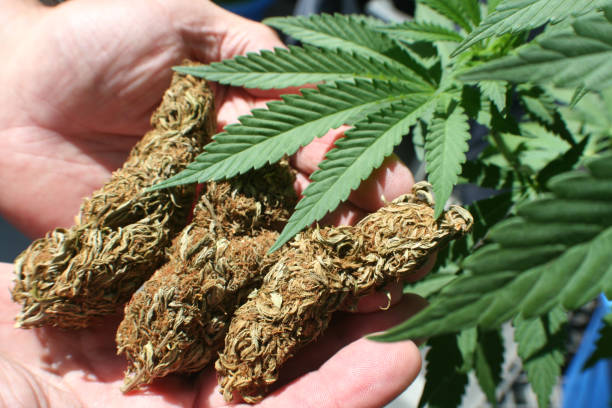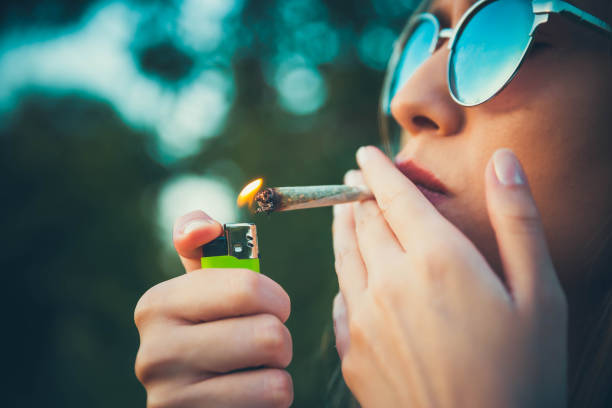

Cannabis regulation in the United States has a long and complex history dating back to the early 1900s. The first significant federal regulation of cannabis came with the Marihuana Tax Act of 1937, which effectively criminalized the plant and imposed heavy taxes on its production and distribution.
Throughout the following decades, cannabis laws became increasingly strict, culminating in the Controlled Substances Act of 1970, which classified marijuana as a Schedule I drug alongside heroin and LSD. This classification meant that cannabis was considered to have a high potential for abuse and no accepted medical use, making it illegal at the federal level.
Despite these stringent laws, attitudes towards cannabis began to shift in the late 20th century as more research emerged about its potential medicinal benefits. In 1996, California became the first state to legalize medical marijuana, sparking a wave of similar initiatives across the country.
In recent years, there has been a growing movement towards legalizing recreational cannabis as well. Colorado and Washington were the first states to do so in 2012, followed by several others. Today, recreational marijuana is legal in over half of US states, with more considering legislation to follow suit.
The legalization of recreational cannabis has sparked debate among policymakers and citizens alike, with arguments both for and against its regulation. Proponents argue that legalization can generate revenue through taxation, reduce crime associated with black market sales, and provide access to a safer product for consumers. Opponents raise concerns about potential negative health effects and increased substance abuse rates.
Overall, the history of cannabis regulation in the United States reflects changing societal attitudes towards drug policy and public health. As more states move towards legalization, it will be important to continue monitoring its impact on society and adjusting regulations accordingly.
Legalizing recreational cannabis has the potential to bring about a host of benefits, particularly in terms of economic impact and job creation. By legalizing and regulating the sale of cannabis, governments can generate significant tax revenue that can be used to fund various public services and initiatives. Additionally, legalizing cannabis can create a thriving industry that provides employment opportunities for individuals across a range of sectors.
One of the key economic benefits of legalizing recreational cannabis is the potential for increased tax revenue. In states where cannabis has been legalized, such as Colorado and Washington, tax revenues from sales have exceeded expectations, providing much-needed funding for schools, infrastructure projects, and other public services. This additional revenue stream can help alleviate budget shortfalls and reduce reliance on other forms of taxation.
Furthermore, legalizing recreational cannabis can create jobs in both the cultivation and retail sectors. The industry requires workers with a range of skills, from agricultural expertise for growing plants to customer service skills for working in dispensaries. As the industry continues to grow, so too will the demand for employees at all levels of the supply chain.
In addition to direct job creation in the cannabis industry itself, legalization can also stimulate job growth in related industries. For example, companies that provide ancillary services such as packaging, marketing, and security may see increased demand as the market expands. Moreover, tourism-related businesses could benefit from an influx of visitors looking to experience legal cannabis firsthand.
Overall, legalizing recreational cannabis has the potential to provide a significant boost to local economies through increased tax revenue and job creation. By embracing this emerging industry and implementing thoughtful regulations, governments can harness these economic benefits while ensuring public safety and responsible use.

As of now, the status of federal cannabis legalization efforts in the United States remains uncertain.. While some progress has been made at the state level, with a growing number of states legalizing marijuana for both medical and recreational use, federal law continues to classify cannabis as a Schedule I controlled substance.
Despite this classification, there have been several recent developments that suggest a shift in attitudes towards cannabis at the federal level.
Posted by on 2024-07-05

The recent wave of state-level cannabis legalization has had a significant impact on local economies across the United States.. As more and more states have chosen to legalize cannabis for both medical and recreational use, the economic landscape in these regions has undergone a profound transformation.
One of the most immediate effects of cannabis legalization on local economies is the creation of new jobs.
Posted by on 2024-07-05

As the landscape of cannabis legislation continues to evolve across the United States, traditionally conservative states are facing mounting pressure to reconsider their stance on marijuana legalization.. While many conservative states have historically been resistant to cannabis reform, there are signs that attitudes towards the plant are shifting.
One of the key factors driving this change is the growing body of scientific research that supports the therapeutic benefits of cannabis.
Posted by on 2024-07-05

The trend towards expunging past cannabis convictions across the United States is being driven by a combination of factors, both social and legal.
One of the main reasons for this movement is the changing public perception of cannabis.. As more states legalize marijuana for medical and recreational use, there is a growing recognition that individuals should not be punished for non-violent offenses related to a substance that is becoming increasingly accepted in society.
Posted by on 2024-07-05

Social equity programs play a crucial role in shaping cannabis legislation nationwide by addressing the historical injustices and disparities that have been perpetuated within the cannabis industry.. These programs aim to level the playing field for individuals who have been disproportionately impacted by the War on Drugs, particularly communities of color.
One of the primary goals of social equity programs is to promote diversity and inclusion within the cannabis industry by providing opportunities for people from marginalized backgrounds to participate in the legal market.
Posted by on 2024-07-05

The potential impact of federal banking reform on the cannabis industry is significant and could have far-reaching implications for businesses operating within this sector.. Currently, many cannabis companies are unable to access traditional banking services due to the legal grey area surrounding marijuana at the federal level.
Posted by on 2024-07-05

There is a growing recognition of the disparities in access to legal cannabis markets among minority communities, and efforts are being made to address these inequalities.
One key issue is the lack of representation and opportunities for minority entrepreneurs in the cannabis industry.. Many states have implemented social equity programs that aim to level the playing field by providing support, resources, and incentives for individuals from disproportionately impacted communities to participate in the legal cannabis market.
Posted by on 2024-07-05

Keeping up with the constantly changing cannabis laws in your state can be a daunting task.. With new legislation being passed and regulations being updated regularly, it can be hard to stay informed on what is legal and what is not when it comes to cannabis.
One of the best ways to stay informed on the latest cannabis laws in your state is to regularly check official government websites.
Posted by on 2024-07-05
The examination of potential risks and challenges associated with the legalization of recreational cannabis is a complex and multifaceted issue that requires careful consideration. While there are certainly many potential benefits to legalizing cannabis, such as increased tax revenue and decreased strain on the criminal justice system, there are also a number of risks and challenges that must be taken into account.
One major concern is the impact that legalization could have on public health and safety. There is evidence to suggest that regular cannabis use can have negative effects on cognitive function, particularly in young people whose brains are still developing. Additionally, there is the risk of increased rates of addiction and substance abuse if cannabis becomes more readily available.
Another potential challenge is the difficulty of regulating a substance like cannabis, which has psychoactive properties and can vary widely in potency. Ensuring that products are labeled accurately and that consumers are aware of the risks associated with use will be crucial in preventing harm.
Furthermore, there is also the issue of how legalization could impact communities disproportionately affected by drug enforcement policies. It will be important to consider measures to address social equity in the cannabis industry and ensure that marginalized groups have opportunities to benefit from its legalization.
In conclusion, while there are certainly potential benefits to legalizing recreational cannabis, it is important to carefully weigh these against the risks and challenges that may arise. By taking a thoughtful approach to regulation and implementation, we can work towards maximizing the positive impacts of legalization while minimizing any potential harms.
As the movement to legalize recreational cannabis gains momentum across the United States, states are faced with the challenge of establishing regulatory frameworks to govern its production, distribution, and consumption. There are a variety of approaches that states have taken in regulating recreational cannabis, each with its own unique set of regulations and guidelines.
One common approach is a state-run system where the government controls all aspects of cannabis production and sales. This model allows for strict oversight and regulation of the industry, ensuring that products are safe and consumers are protected. However, critics argue that this approach limits competition and innovation in the market.
Another approach is a free-market system where private businesses are allowed to operate within certain regulatory parameters. This model promotes competition and entrepreneurship but can also lead to concerns about quality control and safety standards.
Some states have implemented a hybrid system that combines elements of both state-run and free-market models. For example, some states may allow for private cultivation and retail operations while maintaining strict regulations on product testing and labeling.
Ultimately, the goal of these regulatory frameworks is to strike a balance between promoting public health and safety while also allowing for economic growth and consumer choice. As more states continue to legalize recreational cannabis, it will be important to closely monitor these different approaches to determine which strategies are most effective in achieving these goals.
In recent years, there has been a notable shift in public opinion towards the legalization of recreational cannabis. As more and more states and countries around the world move towards decriminalization and regulation of marijuana, it is clear that attitudes towards this once controversial substance are evolving.
One key factor driving this trend is the growing body of research highlighting the potential medical benefits of cannabis. From pain relief to managing symptoms of chronic conditions like epilepsy and multiple sclerosis, there is mounting evidence supporting the use of marijuana as a legitimate form of treatment. This has helped to destigmatize cannabis and shift perceptions from viewing it as solely a recreational drug to recognizing its medicinal value.
Another important influence on public opinion has been the success of legalized recreational cannabis markets in states like Colorado and California. These jurisdictions have demonstrated that regulating marijuana can generate significant tax revenue, create jobs, and reduce crime associated with the black market. As people see these tangible benefits firsthand, they are more likely to support legalization efforts in their own communities.
Additionally, changing cultural norms and generational shifts have played a role in shaping attitudes towards recreational cannabis. Younger generations are more open-minded about marijuana use than their predecessors, viewing it as less harmful than alcohol or tobacco. As these individuals become a larger segment of the voting population, politicians are taking notice and responding to their preferences by pushing for reform.
Overall, the analysis of public opinion suggests that there is a growing acceptance towards legalizing recreational cannabis. With increasing recognition of its medical benefits, successful implementation in other jurisdictions, and shifting cultural attitudes, it seems likely that more states and countries will follow suit in the coming years.
As the debate over the legalization of recreational cannabis continues to gain momentum, many are looking at how current legal frameworks for medical cannabis compare with proposed regulations for recreational use.
Currently, medical cannabis is legal in many states across the US, but with strict regulations in place. Patients must have a qualifying condition and obtain a recommendation from a licensed physician in order to access medical cannabis. Additionally, dispensaries must adhere to strict guidelines for cultivation, distribution, and sales.
On the other hand, proposed regulations for recreational use seek to expand access to cannabis for adults over the age of 21. This would mean that anyone of legal age could purchase cannabis from licensed retailers without needing a medical recommendation. However, there would still be regulations in place to ensure safe consumption and prevent abuse.
Overall, while there are similarities between the current legal framework for medical cannabis and proposed regulations for recreational use, such as licensing requirements and quality control measures, there are also key differences in terms of who can access cannabis and how it can be purchased. As the push for legalization continues, it will be crucial to find a balance between expanding access to cannabis while also ensuring public safety and health.